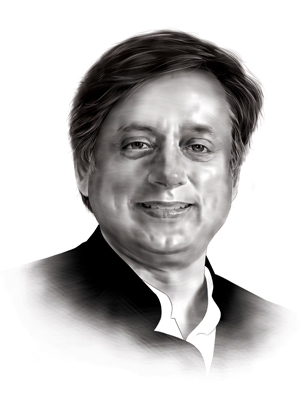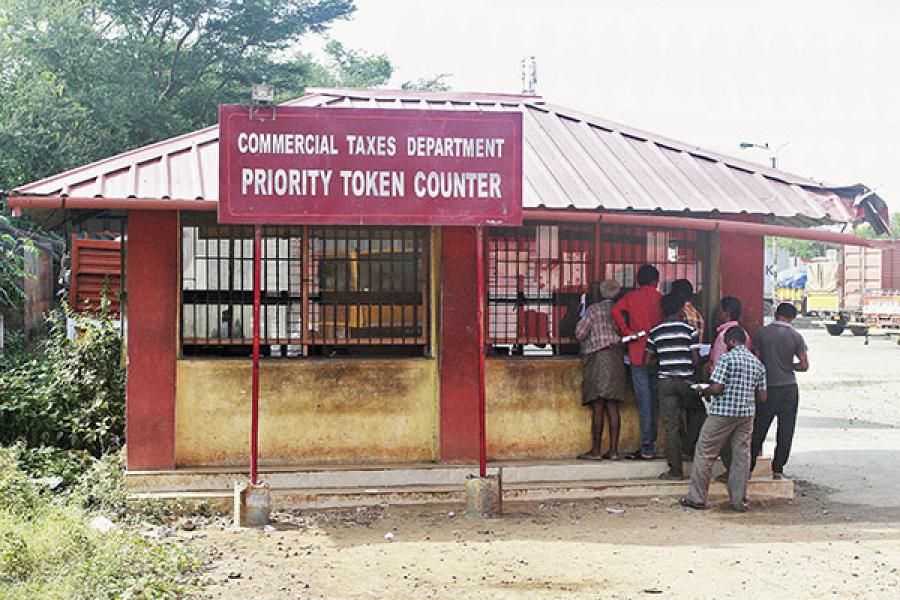
India's on the road to best-in-class: Shashi Tharoor
India is the country that looks best placed to provide the next engine for the world economy
It’s not fashionable to speak of “hope” when discussing the Indian economy, since the talk these days is largely about the Modi government’s failure to launch any significant economic reform, the persistence of “tax terrorism”, the woeful infrastructure and the country’s dysfunctional politics. And yet, despite New Delhi’s policy paralysis, of which I remain a staunch critic, India’s fundamentals are positive, and that’s what gives me hope.
Let’s acknowledge the unusual features of the Indian economy. First, that policy choices are made in a democracy, and that too one with a majority of poor voters—every MP represents a constituency where a majority of his voters live on less than two dollars a day, and so the basic issues of survival and redistribution assume a high priority. Most other democracies grew first, then became democratic later. There was no real universal suffrage when most Western democracies were beginning to prosper during the Industrial Revolution. So Indian economic policy necessarily took the needs of the poor as a priority and sought to win their votes by offering them economic incentives. Redistributive policies have been high on the national economic agenda, because India has been a democracy since the start, and as an MP I know there is no escape from the political responsibility to pursue such policies.
Second, as a corollary of this, economic policy is driven largely by the interests of the poor, rather than taxpayers, since taxpayers are relatively few and non-taxpayers command more votes. Chief Economic Adviser Arvind Subramanian says taxpayers are only 4.5 percent of voters. In a democracy the politician’s accountability is inevitably more to the majority of the voters. Of course, as the economy grows and the taxpayer base broadens, this will change, but that’s for the long term.
Third, instead of developing through strong manufacturing, as most countries have done, and exporting goods, India’s growth in recent decades has been led mainly by services exports. I don’t think that’s true of many other countries.
Fourth, economic development strategy has been affected by the fact that ours is a federal system. Whereas the European Union is 29 sovereign countries and one common market, we are one sovereign country and 29 markets, with differing state taxes and various limitations on inter-state commerce, including octroi and long lines of lorries queued up at checkposts at state frontiers. The UPA government tried to change this with a unifying Goods and Services Tax (GST), but ran into severe problems with the BJP governments in the states. Today the BJP has done a U-turn on GST but is peddling a version of the bill that would differentiate between “producer states” and “consumer states”, once again driving a stake through the heart of the single-market vision that animated the GST idea. But if the Congress Party’s resistance can bring us back to the original, universally-lauded UPA version of the bill, the adoption of GST alone could add a percentage point or two to India’s GDP.
Let us remember that since then-Finance Minister Manmohan Singh launched India on the path of liberalisation in 1991, the country has visibly prospered, and despite population growth, per capita income has grown faster and higher in each of the years since than ever before. In the last 24 years, India has pulled more people out of poverty than in the previous 44—averaging some 10 million people a year in the last decade.
After the US and China, India is the world’s third-largest economy, having overtaken Japan in PPP terms. India’s meteoric rise has been fuelled by a remarkable shift in its economic fortunes. During a period when growth remained modest or sluggish across much of the industrialised world, India’s gross domestic product (GDP) grew a remarkable 7.2 percent in 2014. Despite recent stock market fluctuations, the World Bank estimates India’s GDP growth will be 7.5 percent in 2015. In fact it is expected that India will top the world’s growth rates table of major economies this year. This has not happened before. A 10 percent growth seems unlikely, but a sustained 8 percent per annum growth is possible. And that will transform the nation in twenty years, with per capita income crossing the $10,000 mark.
Even as the world has faced an unprecedented global economic crisis and recession, India continued to grow at a time when most countries in the world suffered negative growth rates in at least one quarter in the last four years. Many reasons have been attributed for this success. First, our banks and financial institutions were not tempted to buy the toxic mortgage-supported securities and engage in the fancy derivatives and credit-default swaps that ruined several Western financial institutions. Second, though our merchandise exports did register declines of about 30 percent, our services exports continued to do well. Third, remittances from our overseas Indian community remained robust, reaching $55.75 billion in 2009-10 and $70 billion in 2013, the bulk of which came from the hard-working blue-collar Indian expatriate community in the Gulf. Fourth, most of our GDP does not come from the external sector but from Indians producing goods and services for other Indians in India.
The basic numbers are also heartening. Half of our growth has come from private consumption, less than 10 percent from external demand; this compares with 65 percent of China’s real GDP growth coming from exports, and only 25 percent from private consumption. India has the highest household savings rate in Asia, at 32 percent of disposable income. In fact, 65 percent of our national annual savings come from households (it’s under 40 percent in China). Indian banks have only 2 percent bad loans versus 20 percent in China.
Much of India’s economy is driven by its so-called “demographic dividend”: Nearly two-thirds of India’s 1.2 billion population is under the age of 35, creating one of the largest consumer markets in the world. It’s no surprise that India is attracting businesses the world over, keen to access these new customers. Our work force has grown by about 2 percent a year in the last decade, while China’s has grown at less than 1 percent, while growing older. Since we have a huge middle class, larger than every country bar the US and China, purchasing power is impressive.
We have a big food grain surplus. Declining oil and commodity prices have favoured us. Inflation, which used to be very high a couple of years ago, has now been contained, thanks largely to the collapse in fuel prices. Our fiscal deficit has been going down. We have a manageable current account deficit. With China slowing and providing multiple barriers to entry, and Europe stagnating, there are very few places in the world that provide the opportunities that India does to investors. The country that looks best placed to provide the next engine for the world economy is India.
The Indian private sector is efficient and entrepreneurial, and is compensating for the inadequacies of the state. India is good at the art of channelling domestic savings into productive investments, which is why it has relied so much less on foreign direct investment, and is even exporting FDI to OECD countries, as the sight of the British prime minister driving an Indian-owned car (the Jaguar) epitomises. India’s entrepreneurial capital and management skills are well able to control and manage assets in the sophisticated financial markets of the developed West.
India, home of the oldest stock market in Asia and a thriving democracy, has the basic systems it needs to operate a 21st century economy in an open and globalising world. We can say with some confidence that India will continue to prosper and pull more millions out of poverty than we have ever done; that our companies will compete effectively with Western corporations for business, purchase foreign companies and assets, expand their trade and overseas investments, invent and develop new technologies, and displace more economic weight around the world.
This doesn’t overlook our poverty, but there are major opportunities at the bottom of the pyramid, which help explain India’s path-breaking leadership in “frugal innovation”: Taking the needs of poor consumers as a starting point and working backwards. Indians are natural leaders in frugal innovation, with our celebrated ‘jugaad system’ of developing make-shift but workable solutions from limited resources. This is not just “making do”. It’s about innovation, or what some call “Indovation”, finding solutions and achieving success within the constraints of a poor, resource-starved developing country—inexpensive innovation, often improvised on the fly.
Indian ingenuity has produced a startling number of other world-beating innovations, none more dramatic than the Mangalyaan mission to Mars, which cost $74 million, a little less than the special effects for the Hollywood space movie Gravity—and about 11 percent of the cost of Nasa’s latest Mars program ($671 million).
So there is new hope, and it lies in these fundamentals that transcend any government. It is possible for India to vastly step up its exports, be a hub of world-class education, and take major strides in the manufacturing sector. But for all this a combination of policies is needed, ranging from exchange rate management to micro-level stimuli.
The Modi government has a great deal to do, though it does talk a good game. So far all we’ve heard is speeches. Finance Minister Jaitley has repeatedly said that beyond “transient” trends, the government needs to concentrate on initiatives that strengthen India’s real economy, particularly in the manufacturing, infrastructure and service sectors. If recognising the issue means we are half way there, that’s good; but we are yet to see too many tangible actions in this direction, beyond slogans. Please don’t blame the Opposition in Parliament for this, because the government can’t point to administrative actions it has undertaken that don’t need parliamentary approval. Even the rewriting of regulations that impede or slow the ease of doing business hasn’t begun.
The old joke runs that the Indian economy grows at night, when the government is asleep. But if we are to see the light of a new dawn, the government needs to wake up—and stay awake. The bad news is that it hasn’t yet shown any signs of doing so. The good news is the basic strengths of the economy will continue to propel India forward. An alert and active government can, however, convert that canter into a gallop.
(This story appears in the 22 January, 2016 issue of Forbes India. To visit our Archives, click here.)
-
 Bigben
BigbenShashi Tharoor, please be honest. It is your anti-progress Congress party which is stalling all reforms because they want to perpetuate the Gandhi family dynasty. You may fool foreign readers but Indian citizens know clearly that Congress is hindering all progress out of pettiness.
on Jan 16, 2016
















